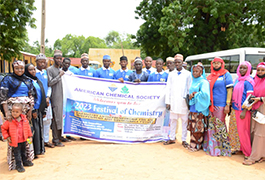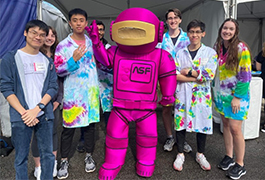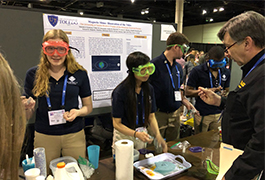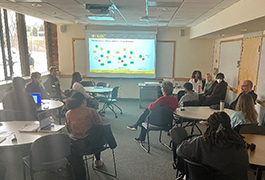Gordon College Explains the ABCs of Ocean Acidification
To celebrate the 15th anniversary of Chemists Celebrate Earth Week (CCEW), the American Chemical Society hosted the 2018 CCEW Look and Learn Video Contest. Congratulations to the ACS Student Chapter at Gordon College in Wenham, MA, for their winning video, entitled “ABCs of Ocean Acidification.”
The views expressed in this video are those of the students and not of the ACS.
Transcript
[Anna] Hey Guys, my name is Anna and I’m here at the beach with some of my friends to talk about ocean acidification.
[Sara] Hi, I’m Sara.
[Victoria] Hey Ya’ll, I’m Victoria.
[Lian] Hi, I’m Lian.
[Quincy] And I’m Quincy.
[Anna] And we all love studying chemistry, which is the study of how things interact and change to form new things. Today we are talking about ocean chemistry, which is how things in our ocean combine and change to affect our water. Ocean acidification sounds like a really crazy complex idea, but we’re going to show you that it’s actually as easy as ABC.
[Sara] A is for Acidification
As chemists, we measure acidification using the pH scale. The more hydrogen ions a substance has, the more acidic it is. Over the past 150 years, oceans are becoming more acidic. This is due to a chemical reaction with carbon dioxide, which humans are releasing into the air.
[Quincy] Carbon dioxide is absorbed into the ocean and reacts with water to form carbonic acid.
CO2 + H2O makes H2CO3
Carbonic acid is a weak acid that is constantly breaking apart and reforming. When it breaks apart it releases hydrogen ions into the water. Remember, the more hydrogen ions something has the more acidic it is.
[Lian] B is for Bioavailability, which is the amount of nutrients in water that organisms can use. These loose hydrogen ions do more than just lower the pH level, they also decrease the bioavailability of certain substances in the ocean. Two substances found in the ocean are carbonate and calcium, which join together to form calcium carbonate which is very important to organisms in the ocean. The problem is, these extra hydrogen ions are stealing carbonate away from calcium. So, there is less calcium carbonate and the bioavailability of it is decreasing.
[Sara] C is for Calcifiers. Calcifers is the name we give to organisms that use calcium carbonate from the ocean to make their shells. This includes things like crabs, oysters, coral and others. However, as the bioavailability of calcium goes down calcifiers have a hard time forming their shells. They turn out either way too weak to offer protection or they take up so much energy to make that they end up having shorter lifespans.
[Anna] So, remember A, B, C.
A is for acidification which is occurring when carbon dioxide from the air combines with seawater to form carbonic acid.
B is for bioavailability and the bioavailability of things like calcium carbonate is decreasing because loose hydrogen ions are stealing the carbonate away from the calcium.
And C is for calcifiers like this guy who are having trouble forming their shells, skeletons, and other protection.
By studying chemistry, we can help protect the oceans and all the organisms that live in it.
So let’s keep our oceans blue and our chemistry green.
Thanks for watching! Gordon College ACS
Discover more resources to observe Chemists Celebrate Earth Week (CCEW)




